Abstract
This paper outlines the experimental design and techniques used in the initial multicentre clinical experiences with praziquantel in the treatment of human infections due to Schistosoma haematobium, S. mansoni, and S. japonicum. Trials were conducted in Brazil, Japan, the Philippines, and Zambia.
Close professional cooperation between informed representatives of the manufacturers of the drug and WHO led to the use of a standard clinical trial design and agreed technical protocols, although parasitological methods of therapeutic assessment varied with the species of infecting parasite. Double-blind studies of tolerance were conducted at three different dose levels and subsequently, in Brazil and Zambia, single-blind trials of parasiticidal efficacy were carried out. The results of the various trials are reported separately.
This type of close professional cooperation is a useful model for initial clinicopharmacological studies of parasiticidal drugs—an area beset with difficulties for both industry and international agencies.
Full text
PDF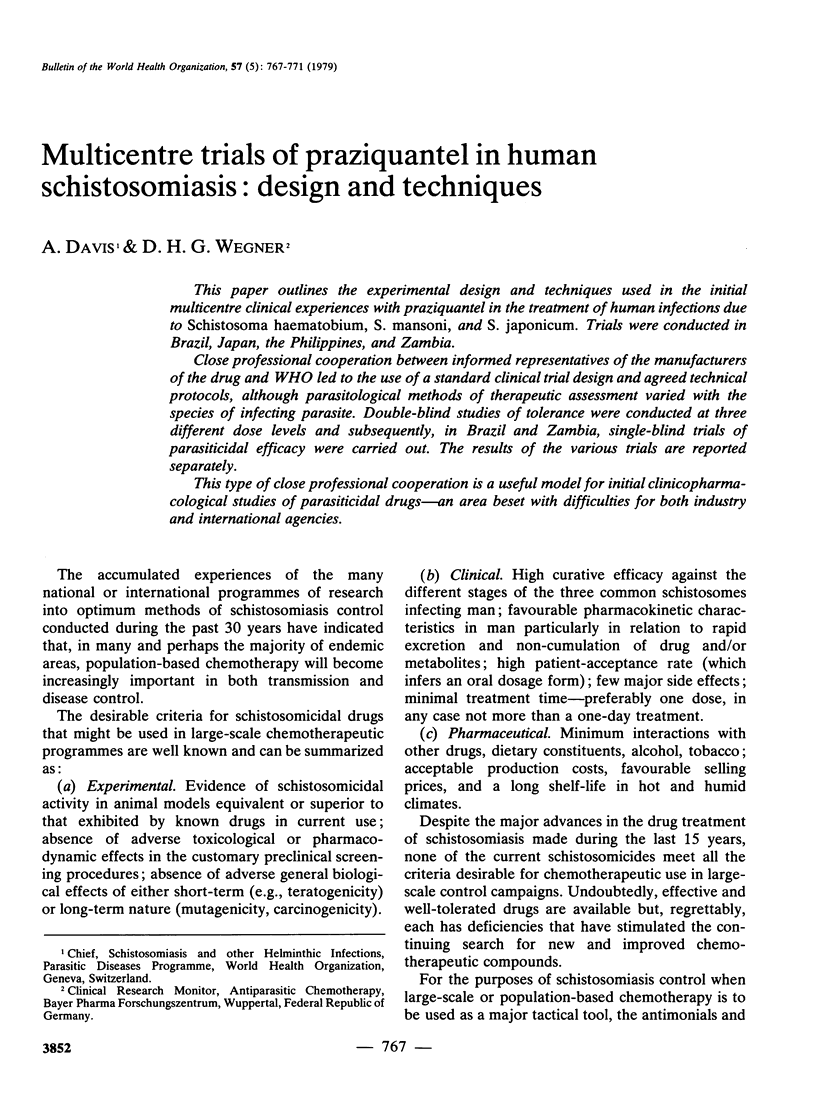
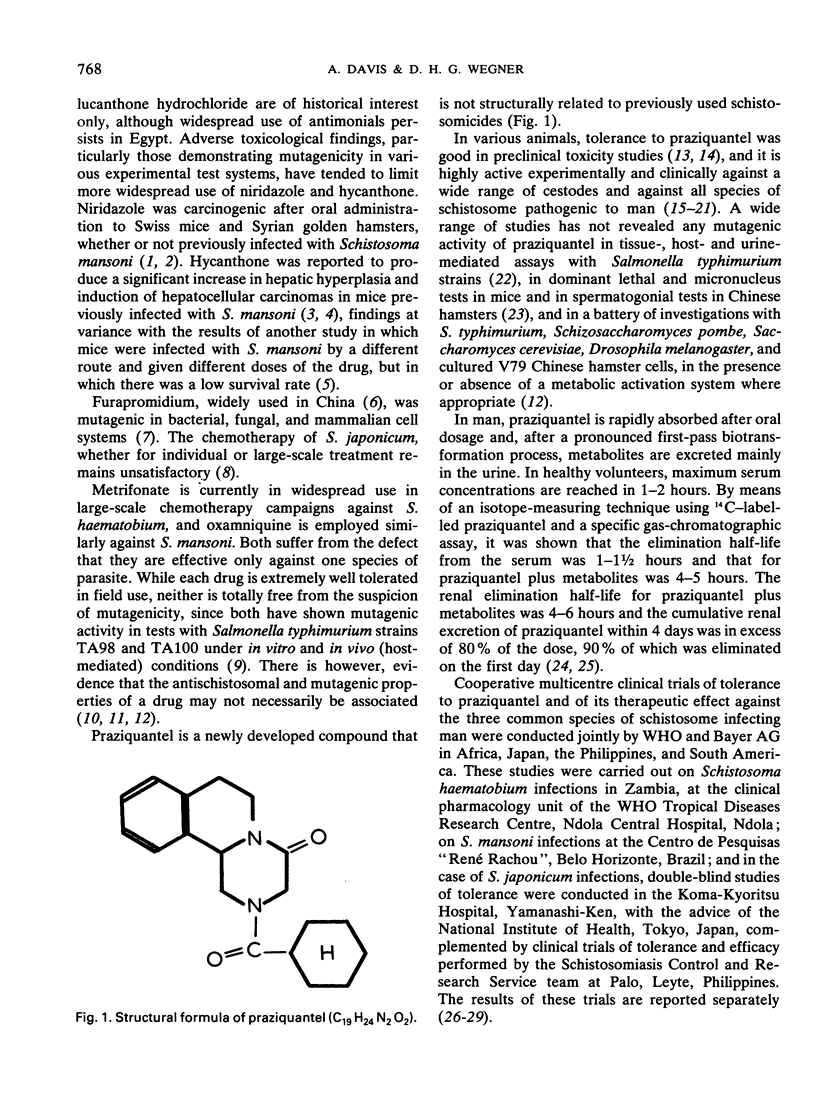
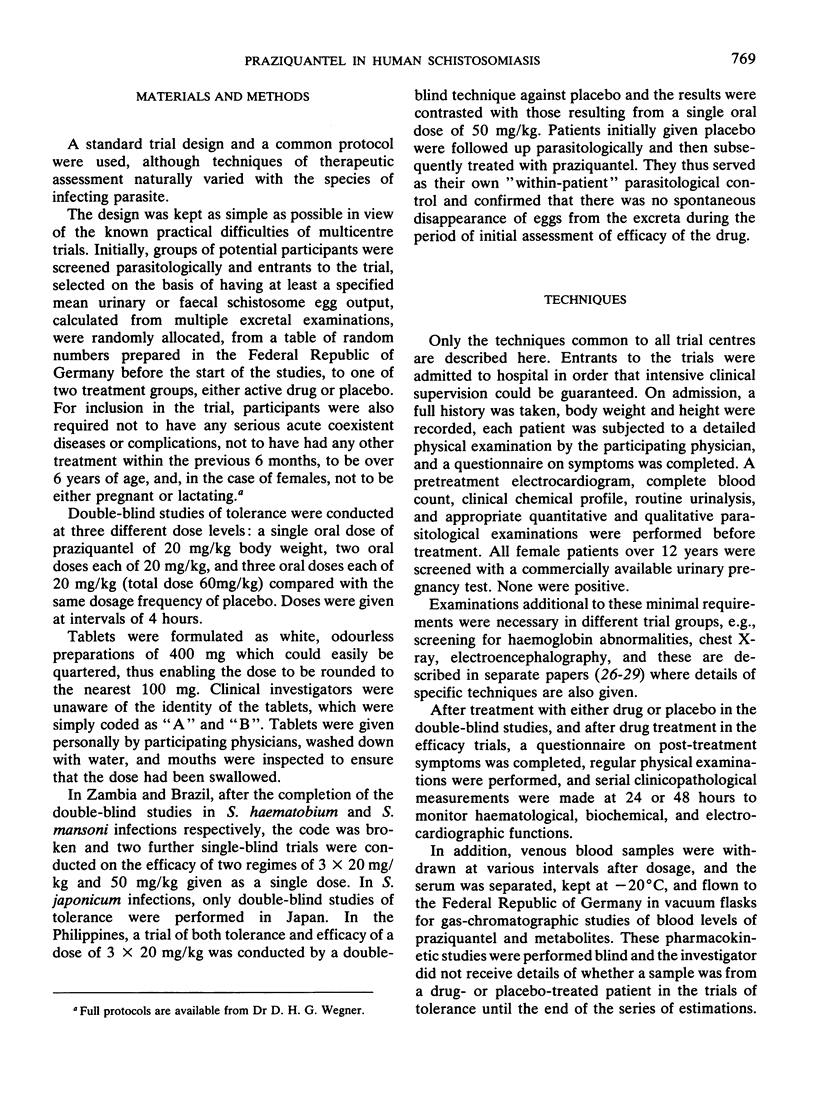
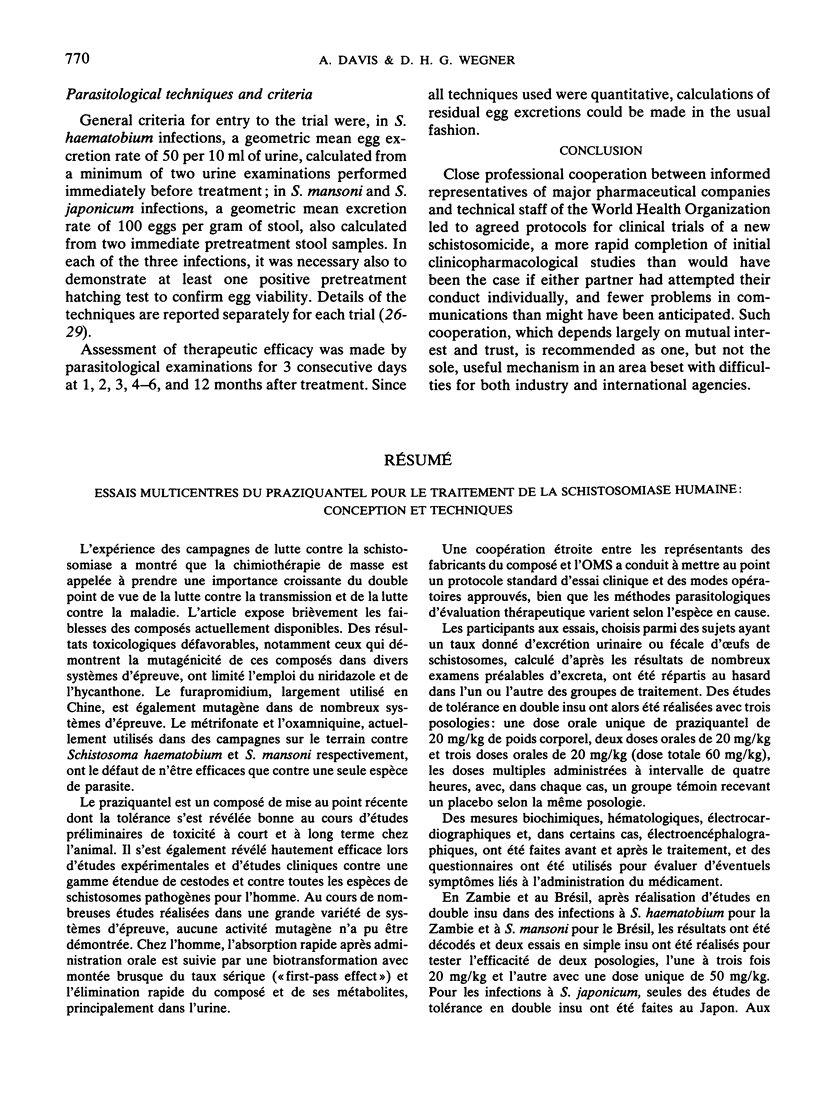
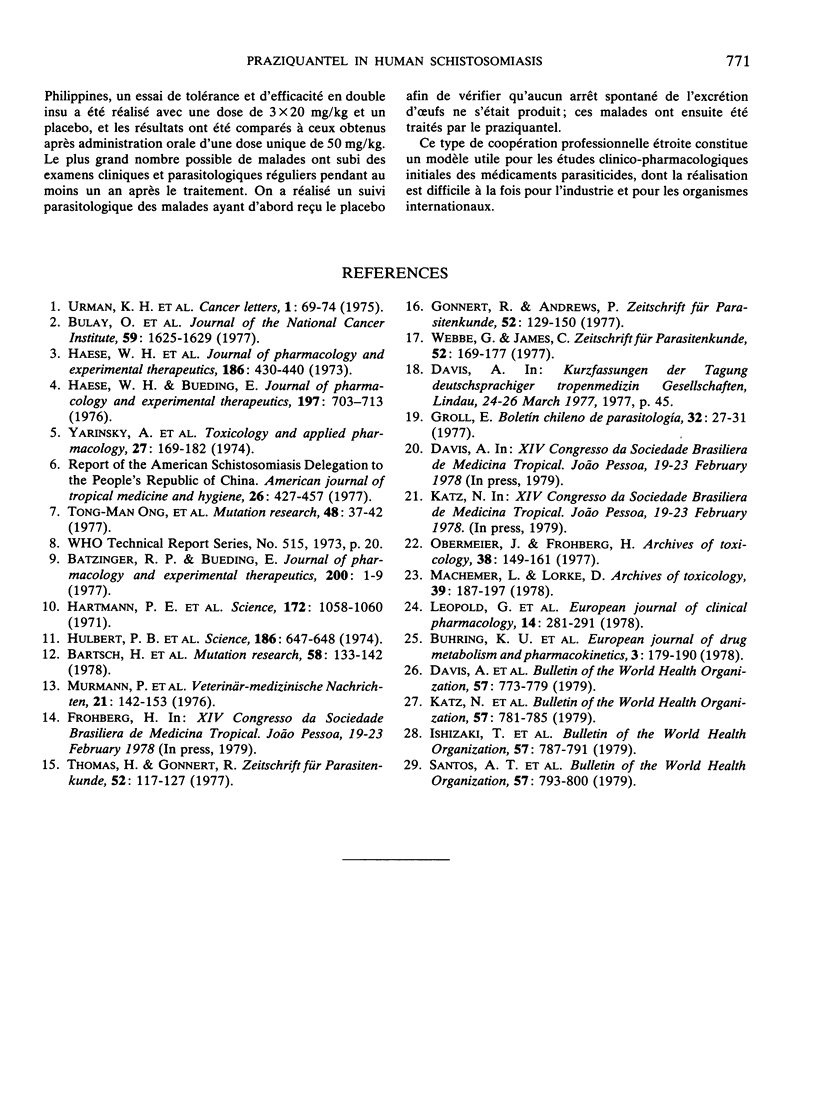
Selected References
These references are in PubMed. This may not be the complete list of references from this article.
- Bulay O., Urman H., Clayson D. B., Shubik P. Carcinogenic effects of niridazole on rodents infected with Schistosoma mansoni. J Natl Cancer Inst. 1977 Dec;59(6):1625–1630. doi: 10.1093/jnci/59.6.1625. [DOI] [PubMed] [Google Scholar]
- Gönnert R., Andrews P. Praziquantel, a new board-spectrum antischistosomal agent. Z Parasitenkd. 1977 Jul 21;52(2):129–150. doi: 10.1007/BF00389899. [DOI] [PubMed] [Google Scholar]
- Haese W. H., Bueding E. Long-term hepatocellular effects of hycanthone and of two other anti-Schistosomal drugs in mice infected with Schistosoma mansoni. J Pharmacol Exp Ther. 1976 Jun;197(3):703–713. [PubMed] [Google Scholar]
- Hulbert P. B., Bueding E., Hartman P. E. Hycanthone analogs: dissociation of mutagenic effects from antischistosomal effects. Science. 1974 Nov 15;186(4164):647–648. doi: 10.1126/science.186.4164.647. [DOI] [PubMed] [Google Scholar]
- Ishizaki T., Kamo E., Boehme K. Double-blind studies of tolerance to praziquantel in Japanese patients with Schistosoma japonicum infections. Bull World Health Organ. 1979;57(5):787–791. [PMC free article] [PubMed] [Google Scholar]
- Machemer L., Lorke D. Mutagenicity studies with praziquantel, a new anthelmintic drug, in mammalian systems. Arch Toxicol. 1978 Jan 25;39(3):187–197. doi: 10.1007/BF00368227. [DOI] [PubMed] [Google Scholar]
- Obermeier J., Frohberg H. Mutagenicity studies with praziquantel, a new anthelmintic drug: tissue-, host-, and urine-mediated mutagenicity assays. Arch Toxicol. 1977 Sep 28;38(3):149–161. doi: 10.1007/BF00293649. [DOI] [PubMed] [Google Scholar]
- Thomas H., Gönnert R. The efficacy of praziquantel against cestodes in animals. Z Parasitenkd. 1977 Jul 21;52(2):117–127. doi: 10.1007/BF00389898. [DOI] [PubMed] [Google Scholar]
- Urman H. K., Bulay O., Clayson D. B., Shubik P. Carcinogenic effects of niridazole. Cancer Lett. 1975 Nov;1(2):69–74. doi: 10.1016/s0304-3835(75)95362-8. [DOI] [PubMed] [Google Scholar]
- Webbe G., James C. A comparison of the susceptibility to praziquantel of Schistosoma haematobium, S. japonicum, S. mansoni, S. intercalatum and S. mattheei im hamsters. Z Parasitenkd. 1977 Jul 21;52(2):169–177. doi: 10.1007/BF00389901. [DOI] [PubMed] [Google Scholar]


